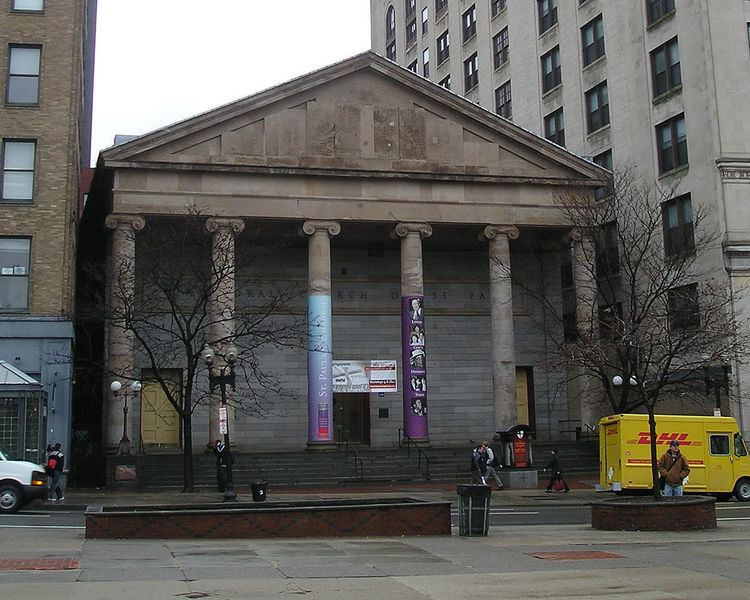Built 1819 Designated NHL December 30, 1970 Area 5,261 m² Added to NRHP 30 December 1970 | NRHP Reference # 70000730 Opened 1819 Phone +1 617-482-5800 | |
 | ||
Address 138 Tremont St, Boston, MA 02111, USA Similar Episcopal Diocese of Massachusetts, Trinity Church, St Stephen's Church, Old West Church, Park Street Church Profiles | ||
The Cathedral Church of St. Paul, Boston is the historic cathedral church of the Episcopal Diocese of Massachusetts. Located at 138 Tremont Street near Downtown Crossing, directly across from Boston Common and Park Street Station, the cathedral is adjacent to the diocesan offices. The current dean of the cathedral is Jep Streit. The church, designed by Alexander Parris and Solomon Willard and built in 1819, was the first Greek Revival church in New England, and was designated a National Historic Landmark in 1970 for its architectural significance.
Contents
19th century
St. Paul's was founded in 1819 when there were two other Episcopal parishes in Boston, Christ Church (better known as Old North Church), and Trinity Church. Both had been founded before the American Revolution as part of the Church of England. The founders of St. Paul's wanted a totally American parish in Boston.
Unusually, at that time, for a church building, St. Paul's was built in Greek Revival architectural style. Its architects were Alexander Parris, best known for Quincy Market, and Solomon Willard, best known for the Bunker Hill Monument. Its granite exterior and sandstone temple front have changed little since its construction. A carving of St. Paul preaching before King Agrippa II was intended to be placed in the pediment over the entrance, but was never executed.
Congregants included Daniel Webster.
20th century
In 1912, after its neighborhood had become mainly non-residential, the diocese named St. Paul's as its cathedral. At this point its chancel was remodeled with a coffered and gilded half-dome, elaborately carved wood reredos, a chancel organ and choir benches. The new chancel's architect was Ralph Adams Cram, known for such landmark Gothic churches as All Saints', in the Ashmont neighborhood of Boston and the Cathedral of St. John the Divine in New York City.
From the 1880s until 1980, St. Paul's had a choir of men and boys who sang introits, hymns and anthems at Sunday morning worship services. Their founding choirmaster was Warren Andrew Locke, who was concurrently the organist and choirmaster at Harvard University from 1882 to 1910. The choir's final organist and choirmaster was Thomas Murray, who later became University Organist and Professor of Music at Yale University.
